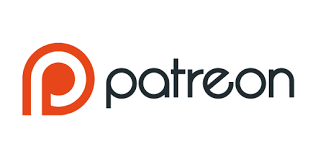Crowdfunding to Publish Your Book
What if you could get paid before you published your book? Not an advance exactly. More like an investment. An opportunity for people to show their support and interest in your work. Of course, I’m talking about using crowdfunding to publish your next book.
With a little work and planning, you can build your audience and afford to hire professional editors and designers. All by utilizing a crowdfunding platform.
What Is Crowdfunding?
As the term implies, crowdfunding is all about funding a project or venture by asking a large group to each chip in a bit of money. Crowdfunding is easier than ever before with multiple fundraising platforms built entirely online.
Crowdfunding isn’t a quick way to make money. It’s not even an easy way. But it is a funding model that aligns well with publishing books because it helps build your audience.
How Does Crowdfunding Work?
The logistics are pretty simple. Pick your platform and make a page or listing for your project along with your pitch for why people should fund your book. Make the listing live for a period and start sharing on social media! Once the fundraising period ends, you’ll collect the money raised, publish your book, and send out copies to all the funders.

Another model we’ll look at uses subscriptions. Your readers pay a monthly fee for access to your work and to help fund your next book. This is one of many types of crowdfunding you could use to help fund your book publishing.
The essence of crowdfunding is the idea that fans pay you to keep creating rather than paying you for something you’ve already created. This is perfect for authors (and basically any creator) because it allows you to both fund a project and build hype around that project.
So how do you use crowdfunding for your next project?
Start With a Goal
Let’s say I want to create a photo book to give as a gift. The budget is low—just enough to cover the cost of printing and shipping the books. I would lay out the pages myself and create a simple cover using Canva or a similar tool. The entire project would cost me maybe $100 for 8 or 10 books.
That’s not a project I’d need to crowdfund.
Now imagine I went to publish a graphic novel. It’s the first of a series I’m developing and I hope to sell a lot of books. I need to hire an artist to work with me on the designs. I’ll need a graphic designer to help me layout the pages too. And some cover art. Plus, since I’m hoping to sell this graphic novel, I’ll need to hire at least one editor to proof the text.
That’s an ambitious goal that will require a large budget. That’s where crowdfunding comes into the picture.
Build Your Publishing Budget
Once you have a goal for your project in mind, you can work back from that goal to determine your budget. Let’s do some math to make this a little easier to imagine.
Start with the hypothetical graphic novel from above. My goal will be to sell 1,000 copies in the first year. To keep the numbers nice and round, I’ll say my margin is $10 per sale.
Now for my publishing budget:
| Publishing Need | Cost |
| Developmental Editing | $600 |
| Copyediting | $400 |
| Layout | $500 |
| Cover Design | $1,000 |
| TOTAL | $2,500 |
Okay, if I meet my goal, I’ll earn $10,000 in a year. And to meet my costs, I need $2,500 just for publishing. I should include at least a year of web hosting and ecommerce for my author website along with budgeting for some ad spending.
If I call my total publishing budget $3,500, I’ve got a fundraising goal to build my crowdfunding campaign.

Crowdfund to Meet Your Budget
Now you are ready to set up your crowdfunding campaign! You’ll need to create a landing page within the platform first. Take some time to plan out your copy. This page will be your crowdfunding hub so take care to build a simple, welcoming page that clearly defines your project and highlights you.
Set your fundraising goal to cover your publishing budget or higher. Following my example, I might set my funding goal to $4,000. With the total goal set, I can plan how I’ll reward backers.
People Love Stuff
The ‘stuff’ is how you’ll make supporting you worth it for your readers. Crowdfunding is a reward-based funding method—for choosing to fund you, backers should get unique rewards (beyond just the book you’ve written). Here’s a sample breakdown of rewards I might use for my example project:
| Reward | Funding Level |
| Ebook | $5 |
| Ebook 1x Print Paperback | $20 |
| Ebook 1x Print Paperback Stickers + Pins Set | $30 |
| Ebook 1x Print Paperback Stickers + Pins Set 1x Print Hardcover | $50 |
| Ebook 1x Print Paperback Stickers + Pins Set 1x Print Hardcover 1x Themed T-Shirt | $80 |
| Ebook 1x Print Paperback Stickers + Pins Set 1x Print Hardcover (signed + numbered) 1x Themed T-Shirt | $100 |
Your lowest point of entry should be the book at retail (plus shipping!). So your campaign starts with just pre-selling your book. Each funding level after that adds on something extra. Because you’re using print-on-demand, it’s ridiculously easy to create in a variety of formats.
Notice the last item on that table too; a themed t-shirt. For readers, a shirt might not be the most appealing tie-in item. But you’ve got a ton of options for making custom items to entice your fans to fund you.
Platform Overview
New ecommerce and crowdfunding sites are popping up daily. As with any service you’ll use to promote your work and your brand, you’ve got to review all the details. I’m going to touch on three of the most popular and well-known options, but these are hardly the only options.

Kickstarter
One of the most popular platforms, Kickstarter is a simple and effective way to raise funds. To maintain their platform, Kickstarter takes a percentage from each successful campaign (5% plus another 3-5% for payment processing). Be certain to factor that into your goal when preparing your campaign.
It all starts with a campaign page where you highlight yourself and the project you’re funding. Kickstarter uses an ‘all-or-nothing’ model; that means if you don’t reach your goal, your backers get a refund and the campaign doesn’t get funded. You’ll want to be sure to set moderate goals to ensure funding if you use Kickstarter.
Check out our webinar with Oriana Leckert, Kickstarter’s Director of Publishing & Comics Outreach for more about using crowdfunding for your book:
Fortunately, they offer ‘stretch goals,’ allowing you to add more rewards or incentives to continue funding beyond your goal. You’ve got to hit the initial goal before you can use stretch goals.
Overall, Kickstarter earns its place at the top of the crowdfunding game because its platform is easy to use, simple, and direct.

Indiegogo
The next most popular and widely known platform, Indiegogo, is markedly similar to Kickstarter. Their platform fee is 5% too, with the additional transaction and transfer fees. Indiegogo does a good job of breaking down their costs.
Indiegogo has one major differentiator when you compare its platform to Kickstarter: flexible funding options. The minimum earning threshold for any campaign on Indiegogo is $500, but beyond that, you can choose to fund your project with flexible or fixed plans.
The fixed plan is just like Kickstarter; hit your goal to receive any funds. Flexible funding lets you keep whatever you earn, even if you don’t hit your goal. Great for you, though there’s some inherent risk for the person funding you—if you don’t hit the goal, will you still be able to deliver on the rewards you promised?
Still, that flexibility makes Indiegogo an appealing option.

Patreon
Last on the list is Patreon, a unique take on crowdfunding. Rather than creating a campaign to fund a single publishing project, Patreon is a subscriber platform. You create a page just like a crowdfunding campaign, but your backers do so at a monthly rate rather than a one-time payment.
Patreon’s fee model is reasonable; they take a percentage of your earnings based on the plan you select. The benefit is that you don’t owe them anything to set up your account; they only earn when you do.
For serial authors or podcasters, Patreon is a terrific way to build a following and earn money. There isn’t the same sense of urgency with Patreon that true campaign-based crowdfunding creates; there’s no deadline or goal to reach. But for an established author who creates content regularly, Patreon is perfect.
There’s also nothing to prevent you from ‘going wide’ on your crowdfunding platforms too. You could maintain a Patreon for anyone who wants to support your regular content and run a Kickstarter to fund publishing and build hype for your next book.

Sell Your Book, Your Way
Sell books on your Wix, Shopify, or WooCommerce website with Lulu Direct.
Or use our Order Import tool for your next book launch.
Crowdfunding Beyond the Book
As bookmakers shift toward direct-to-consumer-focused selling, you can expect crowdfunding platforms to continue to be a vital source of income. But with this new retail environment, you’ll need to consider products beyond your book.
That doesn’t mean your book isn’t the centerpiece; it’s just very (very) difficult to earn enough to live on with just book sales. Think about Harry Potter. There is an entire universe of merchandise built around those characters and the world they inhabit. Everything starts from the book. Every piece of Harry Potter content traces itself back to those books.
Your author website and your crowdfunding page should sell more than just your book. Since you can create so many amazing products on demand, you’re essentially only limited by your imagination! Say you’re writing fantasy novels about a world divided by different nations. You could create emblems for each nation, just like these Game of Thrones magnets.
Making a Living as an Author
For many of us, publishing is a hobby that we would love to make a career in. We might be writers, photographers, artists, or chefs; the common thread is that we create something and want to monetize what we create. Crowdfunding is one of the better answers for motivated creators. Just like selling directly to our fans, using crowdfunding platforms fulfills the two most important marketing goals for authors: building your audience and prompting a purchase.




